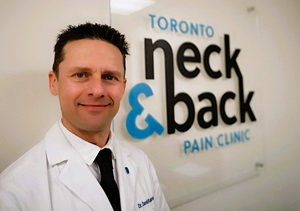Archives for 2016
Introduction
Vertigo is defined as “a condition in which somebody feels a sensation of whirling or tilting that causes a loss of balance.” To describe the sensation of vertigo, patients often use words such as dizziness, giddiness, unsteadiness, or lightheadedness. The neurological vertigo center is called the vestibular nucleus. The vestibular nucleus is located in the [..]
The escalation in health care spending in the United States has mandated an approach for cost containment. The contemporary approach in this effort is called “Evidenced-Based Medicine.” Proponents of Evidence Based Medicine have become increasingly organized, beginning in the 1990s. As an example, in 1996, the British Medical Journal published an editorial titled (1):Evidence Based Medicine: What it is [..]
Fibromyalgia is an incredibly complex, widespread, and disabling neuromusculoskeletal disorder. Fibromyalgia affects between 2-8% of the American population, somewhere between 6 million to 25 million individuals (1). A literature search of the National Library of Medicine of the United States using the key work “fibromyalgia” will locate 8,489 citations (May 8, 2015).Daniel Clauw, MD, is [..]
When a force is applied to a joint, increased motion and “joint separation” occur. This can be done without causing any injury to the joint tissues (bones, cartilage, ligaments, muscles, tendons, nerves, etc.). This increased motion has a number of proposed benefits, including (1):The disruption of intra-articular and peri-articular adhesions.The remodeling of peri-articular fibrosis.Generating spinal [..]
America’s Pain Crisis
Judy Foreman was educated at Harvard, and has been a Lecturer on Medicine at Harvard’s Medical School. In 2014, she published a book titled (1):
A Nation in PainHealing Our Biggest Health Problem
Ms. Foreman notes that of the 238 million adults in America, approximately half of them have chronic daily pain. [..]
Two Viable, Overlapping ModelsAnecdoteSports Team Doctor Calls the ShotsPortola Valley Physician Aims for Zero PainSan Francisco ChronicleOctober 7, 2000Friends of Dr. Mark Sontag of Portola Valley, CA, like to joke that he's “a man for all seasons.”A specialist in sports medicine and rehabilitation, Sontag is a team doctor for the San Francisco Giants, the San Jose Sharks, [..]
Spinal Manipulation for Lumbar Intervertebral Disc Syndrome with RadiculopathyFor thirty years (since 1985), it has been acknowledged that spinal manipulation is successful in the treatment of the majority of patients with low back pain, and that “there is a scientific basis for the treatment of back pain by manipulation.” (1) However, the consensus pertaining to the use [..]
Low back pain (LBP) is VERY likely to affect all of us at some point in life. The question is, do you control IT or does IT control you? Here are ten “tricks” for staying in control of “IT!”
1) STRETCH: When you’re in one position for a long time (like sitting at your desk), [..]
Neck pain is very common! According to one study, between 10-21% of the population will experience an episode of neck pain each year with a higher incidence rate among office workers. Between 33-65% will recover within one year, but most cases become “chronic, recurrent” meaning neck pain will come and go indefinitely. The more we [..]
According to the literature, carpal Tunnel Syndrome (CTS) is one of the most prevalent upper extremity complaints. In fact, it IS the most common “compression neuropathy” (of which there are many) and affects 3-6% of adults in the general population. Additionally, CTS can affect BOTH hands in up to 50% of patients with the condition! [..]


